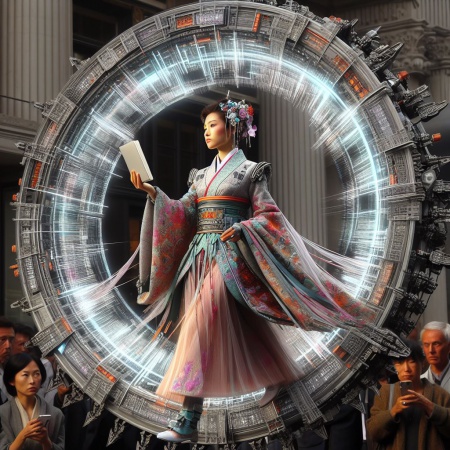Авторизация / Регистрация
Navigating the Future: A Review of Kai-Fu Lee’s “AI - 2041”
Опубликовано 10 апр 2024

Author: George Bregman
In the realm of artificial intelligence, few books have sparked as much conversation as Kai-Fu Lee’s “AI - 2041”. As a distinguished scientist and a key figure in the tech industry, Lee’s insights offer a profound glimpse into the future interplay between humanity and AI.
Let’s delve into the initial chapters of Kai-Fu Lee’s “AI - 2041” to provide a comprehensive overview.
The Dawn of AI: A Visionary’s Perspective Chapter 1 sets the stage for the book’s exploration into the future of artificial intelligence. Kai-Fu Lee, with his extensive background in the tech industry, introduces readers to the transformative potential of AI. He outlines the technological advancements we can expect to see in the next two decades and how they might reshape our society.
AI’s Infancy: The Early Stages of a Revolution In Chapter 2, Lee reflects on the early days of AI development. He discusses the foundational algorithms that paved the way for today’s AI breakthroughs and the pivotal moments that signalled the dawn of the AI era. This chapter serves as a historical backdrop, providing context for the subsequent discussions on AI’s impact.
The AI Evolution: Bridging the Gap Between Man and Machine Chapter 3 delves into the evolution of AI from its rudimentary beginnings to its current state. Lee examines the rapid progress in machine learning and neural networks, emphasizing the increasing synergy between human intelligence and artificial intelligence. He speculates on how this partnership will continue to evolve and the ethical considerations it raises.
AI and Our Shared Future Chapter 4 offers a speculative look at the future, particularly focusing on the societal changes that AI might bring. Lee discusses the potential for AI to address global challenges such as climate change and healthcare, while also considering the disruptions it may cause in the job market and the economy.
These chapters collectively paint a picture of a future where AI is deeply integrated into every aspect of our lives, from mundane daily tasks to complex global issues. Lee’s book encourages readers to consider not only the technological implications of AI but also the broader societal impact it will have in the years to come.
The Pandemic’s Aftermath and AI’s Role In Chapter 4, Lee delves into the post-pandemic world order, weaving a narrative around a girl profoundly impacted by loss. Her story underscores the potential of ‘smart city’ technologies and home cleaning robots, highlighting AI’s role in pandemic management and the psychological barriers that technology can both create and overcome.
The Convergence of Realities Chapter 5 explores the fusion of virtual (VR) and augmented realities (AR) into mixed reality (MR). Lee predicts that MR will craft a hybrid world where virtual and physical elements coalesce, offering interactive experiences that are currently in their nascent stages. He anticipates that companies like Apple may lead this revolution, shaping the future of our digital interactions.
The Ethical Roadmap for Autonomous Vehicles Self-driving cars take the spotlight in Chapter 6, where Lee discusses the ethical conundrums they present. He poses critical questions about AI’s decision-making in life-threatening scenarios and the societal repercussions of autonomous vehicle-related accidents. The chapter also touches on the broader implications for employment in the wake of AI’s ascendancy in transportation.
Quantum Computing: The Next Leap for AI In Chapter 7, the narrative shifts to a hacker using quantum computing to breach Bitcoin’s security. Lee uses this scenario to discuss the extraordinary capabilities of quantum computers and their potential to exponentially accelerate AI learning. He outlines the technical challenges in creating stable quantum computers, hinting at a future where AI’s growth is supercharged by quantum advancements.
AI’s Impact on Employment and Society Chapter 8 addresses the displacement caused by AI’s integration into various sectors. Lee discusses the emergence of relocation companies dedicated to retraining individuals for new roles, particularly in service-oriented jobs that require emotional intelligence—a domain where AI has yet to make significant inroads.
The Dawn of Abundance The final chapter, Chapter 9, paints a picture of a society transformed by AI and robotics, where the concept of work is redefined. Lee speculates on how society might evolve when AI and robots assume roles traditionally held by humans, prompting a reevaluation of our relationship with work and productivity.
“AI - 2041” is not just a book; it’s a roadmap to a future that is both exhilarating and daunting. Kai-Fu Lee’s expertise and foresight make this work an essential read for anyone interested in the trajectory of AI and its profound implications for our world.






